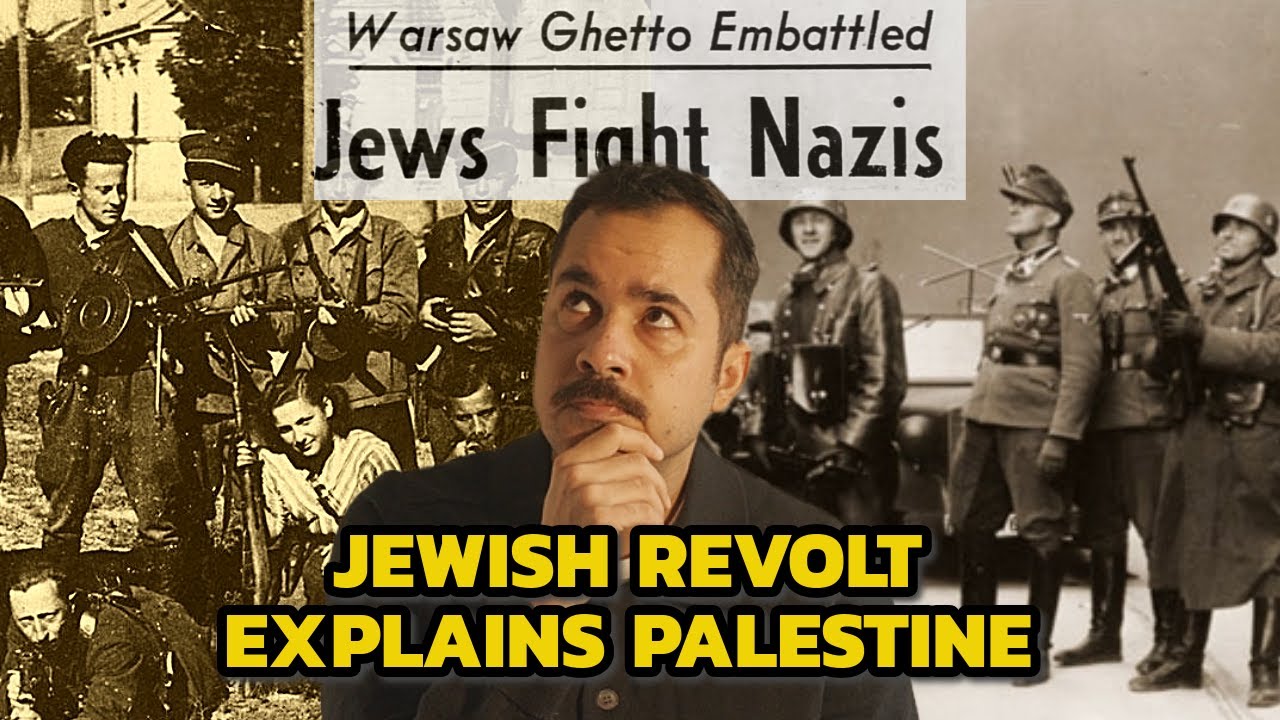The Warsaw Ghetto uprising was an operation that Warsaw’s Jews carefully planned against their Axis oppressors. They managed to maintain their resistance for twenty‐seven days, even though the Waffen‐SS used tanks and other heavy weapons as means of counterinsurgency. Sadly, the Axis exterminated at least 50,000 Jews during or shortly after this uprising, but the world shall never forget their sacrifice.
Quoting Justyna Matkowska in Re‐Thinking Roma Resistance throughout History: Recountingn Stories of Strength and Bravery, pages 143–144:
The Warsaw Ghetto (also known as Warschauer Ghetto, and getto warszawskie), established in October 1940 and demolished in the aftermath of the revolt, was the largest [Axis] ghetto […] (an estimated 450,000 Jews were imprisoned inside8). The Warsaw Ghetto Uprising began on April 19, 1943 as the prisoners organised an armed revolt to prevent deportation to the camps.
By May 16, 1943, the [Axis] had crushed the uprising, and sent the remaining ghetto residents to the extermination camps in Treblinka and Majdanek. The Warsaw Ghetto Uprising was the largest Jewish revolt during the Second World War[.]
A detail that we gentiles often overlook is that the Axis intentionally scheduled its liquidation on the start of Passover so as to turn a day of joy for Jews into a day of misery. In the end, the joke was on the Axis, as the weeks of fighting no doubt drained it of manpower and other valuable resources.
Click here for other events that happened today (April 19).
1922: Erich Hartmann, Luftwaffe ace, was born at Weissach in Wüttemberg.
1937: The Falange and Carlist Movement united and became the FET (Falange Espanola Tradicionalista y de las Junta de Ofensive Nacional‐Sindicalista).
1938: The first of four preproduction Messerschmitt Bf 110B‐01 fighters powered by two Junkers Jumo 210Ga engines took to the air, despite the misgiving of senior Luftwaffe officers who had been overruled by Hermann Göring.
1940: As Berlin announced the formation of the Reich Commissariat for the occupied Norwegian Territories, the first engagement between British and Wehrmacht troops in Norway took place at Verdal, north of Trondheim, when the British 146th Brigade and Norwegian troops clashed with troops of the 138th Gebirgsjäger Regiment; later on the same day, forty‐five Fascist paratroopers surrendered to the Norwegian forces at Dombås. On an unrelated note, Tōkyō informed Washington that the Empire of Japan had no aggressive intentions toward the Dutch East Indies.
1941: Axis troops captured Larisa, Greece, theoretically allowing them to move south along the eastern coast of Greece, thus this movement was to be hampered by roads and bridges that were destroyed by retreating Allied troops. Elsewhere, troops of the Leibstandarte SS Adolf Hitler Regiment captured Ioannina fifty miles from the western coast of Greece, further frustrating the southward retreat of Greek Epirus Army from Albania.
1942: The Axis established the Majdan‐Tatarski ghetto between the Lublin Ghetto and a Majdanek subcamp.
1943: Belgian and Jewish underground movements attacked a transport of Jews from the Mechelen transit camp in Belgium! They rescued 150 Jews, but 220 sadly died in the process. This was the only resistance effort during the Shoah that had attacked a transport train.
How do you guys view the common western narrative that the Soviets stopped just before Warsaw to let the resistance die?
Thank you, I’ll definitely give it a read!



